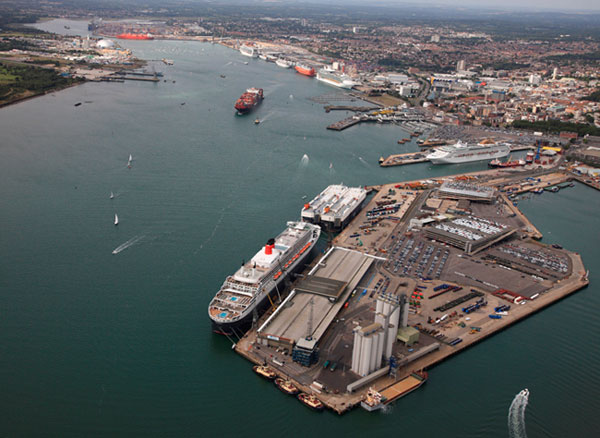The Port of Southampton
The port of Southampton is the second largest cruise port in Europe, behind only Venice, and is the principle port for cruising in the United Kingdom. But did you know that Southampton also boasts the UK’s second largest container terminal, the UK’s principle automotive port, and is a key distribution hub for oil and liquid-alcohol bulks? Indeed Southampton is a major cereal-exporting port and a growing force in the imported bulks sector, and the sole UK entry port for fresh produce from the Canary Islands.
The geography of Southampton is influenced by the sea and rivers, with the city lying at the northern tip of Southampton water, which benefits from a double high tide, with two high tide peaks, and most importantly all the berths are tidal and lock free, allowing unhindered access for the world’s largest vessels.
![]() Cruise Southampton provides an excellent link to locate cruises and local amenities such as museums, shops etc, using an interactive map. You can access the link HERE
Cruise Southampton provides an excellent link to locate cruises and local amenities such as museums, shops etc, using an interactive map. You can access the link HERE
![]() Associated British Ports have a link to access information relating to the port HERE
Associated British Ports have a link to access information relating to the port HERE
 More recently a BBC documentary called ‘Sea City‘ was aired – a 3 part documentary going behind the scenes at the Port of Southampton, meeting staff and seafarers and taking a look at everyday tasks and momentous events at the port.
More recently a BBC documentary called ‘Sea City‘ was aired – a 3 part documentary going behind the scenes at the Port of Southampton, meeting staff and seafarers and taking a look at everyday tasks and momentous events at the port.
Soton Freight on Facebook
Unable to display Facebook posts.
Show error
Type: OAuthException
Code: 100
Please refer to our Error Message Reference.

